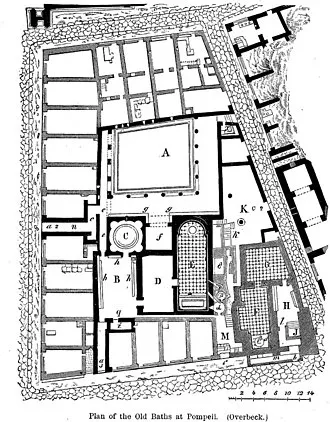Roman Bath House Floor Plan: A Guide to Understanding Ancient Bathing Practices
By Abu Rizal at: February 15, 2020
Bathing has been an important aspect of human hygiene and relaxation for thousands of years.
Ancient Rome was well-known for its elaborate bathhouses, which served as places of social gathering, relaxation, and physical fitness.
In this article, we will explore the Roman Bath House Floor Plan and how it provided a unique experience for visitors.
The Basic Layout of a Roman Bath House
A Roman Bath House typically consisted of four main areas, each with a specific purpose. These areas were the frigidarium (cold room), tepidarium (warm room), caldarium (hot room), and the natatio (swimming pool).The frigidarium was the first room that visitors entered, and it was designed to shock the body with cold water.
The tepidarium, located next to the frigidarium, was a warm room that prepared visitors for the hot room.
The caldarium was the hottest room in the bathhouse and had hot water available for visitors. Finally, the natatio was the swimming pool area that provided a refreshing way to cool down after the heat of the caldarium.
The Roman Bath House Floor Plan
The Roman Bath House Floor Plan was designed with a specific flow in mind.Visitors would enter through the apodyterium (changing room) and then make their way through the various rooms in a specific order.
The Apodyterium
The apodyterium was the changing room, and it was the first room visitors would enter.This room contained benches for changing clothes and cubbies for storing personal items. Some bathhouses also had a separate entrance for women to ensure privacy.
The Frigidarium
After changing into a swimsuit, visitors would proceed to the frigidarium. This room was the coldest of the four main areas and was designed to shock the body with cold water.Visitors could immerse themselves in the cold water or pour it over themselves using a bucket.
The Tepidarium
Next, visitors would make their way to the tepidarium, which was a warm room designed to relax the body and prepare it for the heat of the caldarium.This room often contained heated benches, which provided a warm place to rest.
The Caldarium
The caldarium was the main attraction of the bathhouse. This room contained hot water, which visitors could use to bathe and relax their muscles.The heat of the caldarium was believed to have therapeutic benefits for the body, and many visitors spent a significant amount of time in this room.
The Natatio
Finally, visitors would make their way to the natatio, which was the swimming pool area. This area provided a refreshing way to cool down after the heat of the caldarium.Some bathhouses also had additional rooms for massage, exercise, or other activities.
Conclusion
The Roman Bath House Floor Plan provided a unique and luxurious experience for visitors.The flow of the floor plan was designed to provide visitors with a specific sequence of hot and cold experiences, which was believed to have therapeutic benefits for the body.
Today, the remains of ancient Roman bathhouses can be found throughout Europe and provide a glimpse into the ancient practice of bathing and relaxation.













